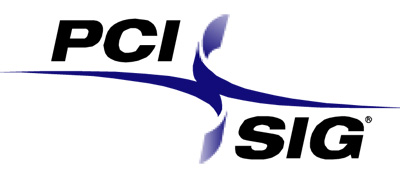AMD's Radeon HD 6990: The New Single Card King
by Ryan Smith on March 8, 2011 12:01 AM EST- Posted in
- AMD
- Radeon HD 6990
- GPUs
PCI-Express Compliance: Does It Even Matter?
For a while now we’ve been under the impression that video card size and power consumption was ultimately capped by the PCI-Express specification. At present time the specification and its addendums specify normal (75W), 150W, 225W, and 300W PCIe card operation. In the case of 300W cards in particular this is achieved through 75W from the PCIe slot, 75W from a 6pin PCIe power connector, and 150W from an 8pin PCIe power connector. As the name implies, the PCIe specification also defines what the 6pin and 8pin power connectors are supposed to be capable of, which is where 75W and 150W come from respectively.
Altogether the biggest, most powerful card configuration in the PCIe specification allows for a 12.283” long, triple-wide card that consumes 300W. To date we’ve never seen a card exceed the physical specifications, but we’ve seen several cards exceed the electrical specifications. This includes cards such as the 5970 and some overclocking-oriented 5870s that were designed to handle more than 300W when overclocked, and even more exotic cards such as the Asus ARES 5870X2 that simply drew more than 300W from the get-go. We have yet to see a reference design from AMD/NVIDIA however that exceeds any part of the PCIe specification by default.

So it has been clear for some time now that cards can exceed the PCIe specifications without incurring the immediately wrath of an army of lawyers, but at the same time this doesn’t establish what the benefits or losses are of being or not being PCIe compliant. To have a reference design exceed the PCIe specifications is certainly a new mark for the GPU industry, so we decided to get right to the bottom of the matter and get an answer to the following question: does PCI-Express compliance matter?
To answer this question we went to two parties. The first of which was of course AMD, whose product is in question. AMD’s answer basically amounts to a polite deflection: it’s an ultra-enthusiast card that at default settings does not exceed the power available by the combination of the PCIe slot and PCIe power connectors. Furthermore, as they correctly note, the 6990 is not the first card to ship at over 300W, as the ARES and other cards were drawing more than 300W a year ago. It’s a polite answer that glosses over the fact that no, the 6990 isn’t technically PCIe compliant.
To get a second opinion on the matter we went straight to the source: The Peripheral Component Interconnect Special Interest Group (PCI-SIG), which is the industry group that defines the PCIe standard and runs the workshops that test for product compliance. The PCI-SIG’s member list is virtually everyone in the computing industry, including AMD, NVIDIA, and Intel, so everyone has some level of representation with the group.

So what does the PCI-SIG think about cards such as the 6990 which exceed the PCIe specification? In a nutshell, they don’t directly care. The group’s working philosophy is closer to approving cards that work than it is about strictly enforcing standards, so their direct interest in the matter is limited. The holy grail of the PCI-SIG is the PCI Express Integrators List, which lists all the motherboards and add-on cards that have passed compliance testing. The principal purpose of the list is to help OEMs and system integrators choose hardware, relying on the list and by extension PCI-SIG testing to confirm that the product meets the PCIe standards, so that they can be sure it will work in their systems.
The Integrators List is more or less exclusively OEM focused, which means it has little significance for niche products such as the 6990 which is split between end-user installation and highly customized OEM builds. The 6990 does not need to be on the list to be sold to its target market. Similarly the 5970 was never submitted/approved for listing, and we wouldn’t expect the 6990 to be submitted either.
It is worth noting however that while the PCI-SIG does have power specifications, they’re not a principal concern of the group and they want to avoid doing anything that would limit product innovation. While the 300W specification was laid out under the belief that a further specification would not be necessary, the PCI-SIG does not even test for power specification compliance under their current compliance testing procedures. Conceivably the 6990 could be submitted and could pass the test, leading to it being labeled PCIe compliant. Of course it’s equally conceivable that the PCI-SIG could start doing power compliance testing if it became an issue…
At the end of the day as the PCI-SIG is a pro-compliance organization as opposed to being a standard-enforcement organization, there’s little to lose for AMD or their partners by not being compliant with the PCIe power specifications. By not having passed compliance testing the only “penalty” for AMD is that they cannot claim the 6990 is PCIe compliant; funny enough they can even use the PCIe logo (we’ve already seen a Sapphire 6990 box with it). So does PCIe compliance matter? For mainstream products PCIe compliance matters for the purposes of getting OEM sales; for everything else including niche products like the 6990, PCIe compliance does not matter.










130 Comments
View All Comments
Figaro56 - Tuesday, March 8, 2011 - link
I have 2 XFX HD 5870 cards for sale. I have a double lifetime warranty on these so you get the use of the second lifetime warranty on these. Interested? They are very great performers I can vouch for that. I am use to upgrading my GPU on an annual basis so I am upgrading to 2 HD 6970. $230 each.Thanny - Tuesday, March 8, 2011 - link
Ignoring the inappropriateness of advertising here, I submit:http://www.newegg.com/Product/Product.aspx?Item=N8...
Why would someone pay you $230 for a used product that can be obtained new at $190?
fausto412 - Tuesday, March 8, 2011 - link
I kinda wanted to see a chart with the most common gaming resolution...and can we benchmark with a Q9550 just for comparison? i would love to know if i'm holding back a video card by not going i5 or i7 and by how much.jabber - Tuesday, March 8, 2011 - link
If you can afford a 6990 why would you be bothering using it with a Q9550 at 1680x1050. Hence why it isnt part of this review.This review is to show how it works for the intended market/customer.
As I said before, this card isnt for folks like you (or me for that matter). Sorry.
7Enigma - Tuesday, March 8, 2011 - link
The most common gaming resolution for this card is the one Ryan tested. It is pointless to test at a lower resolution other than possibly true 24" (1920X1200). And even at that res this card is really not needed.Figaro56 - Tuesday, March 8, 2011 - link
BOYA to both of those resolutions. You should be playing your games at 2560x1600. Now that's what I'm talkin about! You'd be saying hell ya.Jorgisven - Tuesday, March 8, 2011 - link
It seems we're getting into the Pentium IV trap, a bit. Big, hot, power-hungry, noisy chips...personally, I'm going to pass on this generation of GPUs. I'm waiting for a revolution in either manufacturing or coding. It's all well and good to have a fast computer for getting what you need done in minimal, but at the risk of the box taking flight because the fans are now of jet engine proportion in speed and power, I'd rather not be able to hear my fans over my headphones...or risk my cat getting sucked into the intake.jabber - Tuesday, March 8, 2011 - link
Well we've kinda got what we asked for. We've all gamely been buying more and more powerful graphics cards with regards to brute force rendering power.We've shown we love buying 750w+ power supplies with multiple GPU connectors, buying SLI and Xfire setups galore.
So the GPU corps think we love nothing more than just piling on more and more power and wattage to solve the situation.
It works both ways.
What we should have been doing was challenging AMD and Nvidia to develop smarter rendering techniques. Had either of them developed PowerVR to the state we are in today we would be in a far better place. Chances are the most power hungry card we'd have today would be 5770 level.
We need something more efficient like PowerVR to take us to the next level.
Less brute force and more finesse.
therealnickdanger - Tuesday, March 8, 2011 - link
Are you waiting to update your test system until the SATA port issue is corrected? Seems to me that anyone wanting to buy this card would also be using an overclocked 2600K... According to the Bench numbers, the 2600K offers roughly 30% more frames than the 920, depending on the game. That indicates to me that your test system is insufficient to properly test this card.Granted, since the vast majority of displays are fixed at 60Hz, fps counts beyond that don't really matter, but I have to wonder what impact this would have on folks with 120Hz-native LCDs. That extra 30% could make the difference.
... just sayin'. :)
Ryan Smith - Tuesday, March 8, 2011 - link
At this point we're waiting on SNB-E. SNB is very nice, but for a GPU testbed the lack of PCIe bandwidth is an issue.